How cricket and Victorian gin palaces combine to drive Nicholson's beer festivals
Added: Monday, October 21st 2013
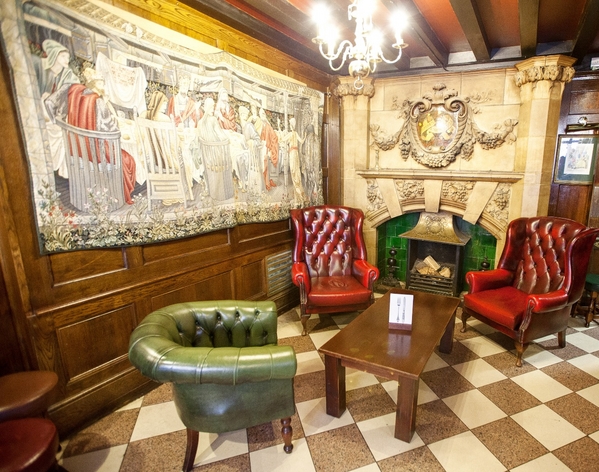
A bizarre mix of gin, beer and cricket combine to make Nicholson’s pubs places of architectural splendour, rich in the history of Georgian and Victorian Britain. The pubs will be the scene of a rolling beer festival from 21 October to 17 November. The emphasis will be on cask beers brewed in the localities of the pubs. Most of the inns are based in London but there are also outlets in Birmingham, Edinburgh, Leeds, Liverpool, Manchester, Oxford and York..
The pubs – now part of the Mitchells & Butlers group -- have a long and fascinating history that’s rooted in both gin and cricket. James and William Nicholson were gin distillers in London, based in both Clerkenwell and Bow, where they made Lamplighter Gin. The Bow site still stands at Three Mills on an island in the River Lea (below) and is clearly visible from District Line Underground trains between Bromley-by-Bow and West Ham stations. Distilling ended there during World War Two as a result of both bombing and a shortage of grain but the restored buildings are now used as film and TV studios.
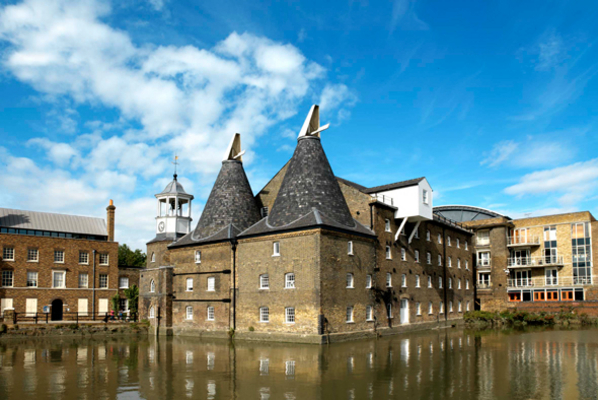
There’s a strong connection between gin distilling and brewing in the area. Three Mills is close to Bow Bridge where George Hodgson had a brewery in the late 18th and 19th centuries and was the first to send strong ale to India from the neighbouring East India Docks. It was Hodgson’s beer that led to the development of India Pale Ale and both Hodgson and Nicholson’s would have sourced grain from the barley fields of Hertfordshire, transported by barges down the River Lea. Following World War Two, the Three Mills site was used as a warehouse by the large East London brewer Charrington.
William Nicholson (1825-1909) was chairman of J&W Nicholson, which had been founded in the 18th century at the time of the craze for cheap gin. He was the son of one of the founders, John Nicholson, and became the Liberal Member of Parliament for Petersfield in Hampshire.
William
Nicholson,
gin distiller
and cricketer
who bought
Victorian
gin palaces
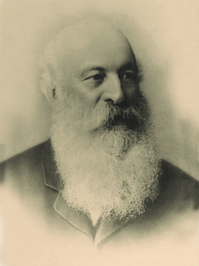
He was also a first-class cricketer, a batsman and wicket keeper who played for Middlesex between 1845 and 1869. The wealth he acquired from gin distilling made him a major cricket benefactor. When the MCC, cricket’s governing body (now the ECB), bought the freehold to Lord’s ground in 1864, Nicholson donated £18,333. He loaned a further £21,000 when a new pavilion was built at the ground in 1869. It’s thought that the MCC’s famous “egg and bacon” colours of yellow and red were adopted from the emblem of Nicholson’s distillery and Lamplighter labels, though this is disputed by some who probably don’t like the association with gin.
Nicholson’s became pub owners by a twin track route. The distillery bought pubs in the East End of London when publicans failed to pay their gin bills. The company also acquired more ostentatious “gin palaces” from the Victorian period. Government legislation in the late 18th century had forced dram shops that sold only gin to also provide wine and beer in an attempt to counter the social problems caused by the drinking of cheap spirits. It was a problem made famous by Hogarth’s images depicting the squalor of Gin Lane and the cheery nature of Beer Street. As a result, the dram shops expanded in size. In the following century new, larger and architecturally dazzling pubs, lit by gas, were facetiously dubbed “gin palaces” and many of them form the core of Nicholson’s 77-strong estate today.
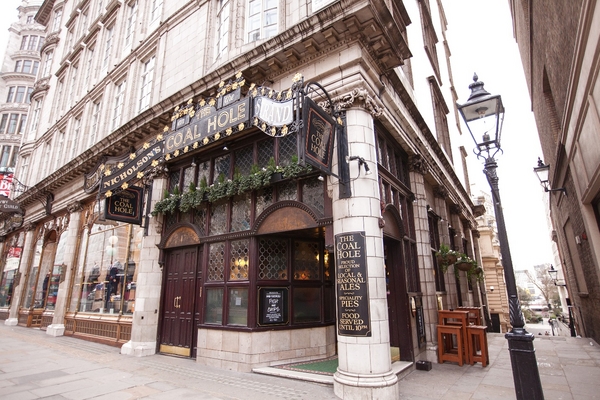
But not all have such an illustrious past. The Coal Hole in The Strand in London (above and top) started life as the coal cellar for the Savoy Hotel. Today the long, narrow L-shaped bar, with beams and latticed windows, is a listed building and is independent of the hotel, though guests often pop in for a beer: Tom Jones, wearing a large hat, and Danny DeVito have been spotted supping pints recently.
Nicholson’s Ben Lockwood told me that the autumn beer festival was the third staged by the pub group in the past year. The festivals have been fuelled, he says, by the growth of cask beer in the group, up from 11 per cent of total sales three years ago to 20 per cent today. In total, Nicholson’s sells 4.7 million pints of cask beer a year.
“The festivals allow our publicans to flex their muscles,” he adds. “We’ve invested in special stillages that enable publicans to increase the number of beers they serve during the festivals. Some 16 to 20 of our pubs can have 12 cask beers on.”
The group employs Cask Masters attached to the pubs. They have been on special training courses and visit breweries to improve their knowledge. Their job is to encourage bar staff to develop a passion for cask beer and to look out for guest ales that suit individual houses. The Cask Masters also write tasting notes for both bar staff and customers.
The core beer in all pubs is Nicholson’s Pale Ale, brewed for the group by St Austell Brewery. The Cornish brewery will add a 5% Porter for the festival. The rest of the beers available during the festival will be local variations: the 43 London pubs, for example, will have beers from Sambrooks, Portobello, Redemption and Windsor & Eton. Customers will also be invited to take part in the Truman's Taste Test: the revived Truman's Brewery in East London has brewed both UK Gold and US Pale and pubgoers' views will help inform Truman's when the brewery adds one of the two beers to its portfolio.
Throughout the country, visitors to the pubs will find a wide choice of beers, including mild, bitter, golden ale, wheat beer, rye beer, porter and stout.
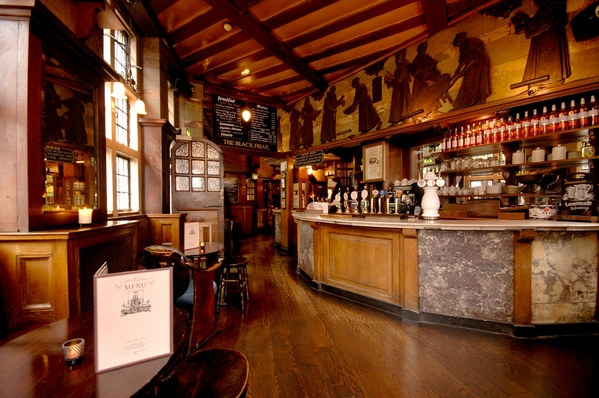
Among Nicholson’s London pubs are the Argyll Arms and the Clachan in the West End, the Old Bell in Fleet Street built by Sir Christopher Wren for his masons who rebuilt St Bride’s Church after the Great Fire of London in 1666, Woodins Shades in Bishopgate, Doggetts Coat & Badge on the south side of Blackfriars Bridge, the Dog & Duck in Soho, where Madonna was known to drink when she lived in London, and the Bear & Staff off Leicester Square where Charles Chaplin enjoyed a drop.
The jewel in the capital crown is, arguably, the Blackfriar opposite Blackfriars Station (above). This Art Nouveau-inspired masterpiece pays tongue-in-cheek homage to the bibulous monks who once inhabited a monastery on the site. William Nicholson might turn in his grave if he knew that one of the carvings inside the pub advertises Booths Gin, once his arch rival.
Among the group’s Oxford pubs is the Eagle & Child, a favourite watering hole of J R R Tolkien and C S Lewis, who pursued both academic and literary careers in the city. The best-known of Nicholson’s Edinburgh pubs are Deacon Brodie’s, Greyfriars Bobby’s and the Conan Doyle.
Ben Lockwood promises a further beer festival in the spring of next year. During the current festival, drinkers who sign up for membership of the Nicholson’s Cask Ale Club can enjoy 10 per cent of all handpumped beers and other deals including a pint of Pale Ale with a meal for £7.50. See www.nicholsonspubs.co.uk/caskaleclub.
In the unlikely event you are served less than a full pint, you could revive an old expression by asking the barperson “to put a large gin in there”. Nicholson’s, naturally.




